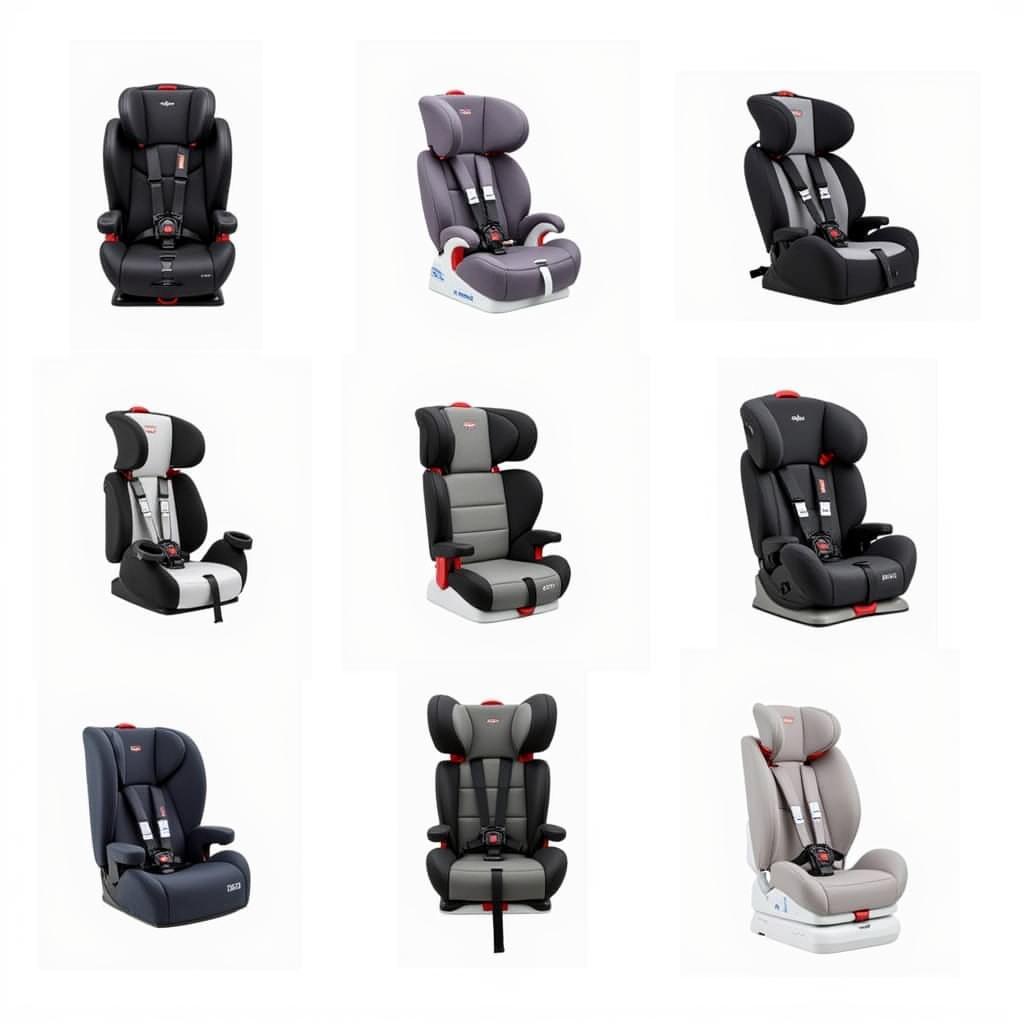Choosing the best booster car seat is a crucial decision for parents. It’s about ensuring the safety and comfort of your child during car journeys as they transition out of harnessed car seats. This guide will walk you through everything you need to know about booster seats, from types and features to installation and safety tips, helping you make the informed choice for your growing child.
Understanding Booster Car Seat Types
There are two main types of booster car seats: high-back boosters and backless boosters. High-back boosters offer head and neck support, crucial for children whose car’s headrest is too high or doesn’t exist. Backless boosters are more compact and suitable for older children who have outgrown the need for head support. Understanding the differences between these types is the first step towards finding the best booster car seat for your child.
Choosing the correct booster can be just as important as selecting the right [baby stroller and car seat]. Both decisions prioritize safety and comfort for your little one.
Key Features to Look For
When searching for the best booster car seat, consider features like adjustable headrests, cup holders, and washable covers. An adjustable headrest ensures a comfortable fit as your child grows, while cup holders can prevent spills and keep drinks within reach. Washable covers are a practical necessity for easy cleaning after inevitable messes. Some high-back boosters also offer side-impact protection for added safety in the event of a collision.
Proper Installation and Use
Correct installation is vital for maximizing the effectiveness of the best booster car seat. Always follow the manufacturer’s instructions carefully. The seat belt should fit snugly across your child’s chest and lap, not on the neck or stomach. Ensure the seat belt stays in the proper position throughout the journey, even if your child falls asleep.
Why a Booster Seat is Necessary
Booster seats position the vehicle’s seat belt correctly across a child’s stronger bones—the chest and hips—offering crucial protection in a crash. Without a booster, the seat belt can rest on a child’s stomach or neck, causing serious injuries in an accident. A booster isn’t just about comfort; it’s about safety.
For families who travel frequently, finding the right [travel car seat] is essential. Just like choosing the best booster, prioritizing safety and convenience is key.
When to Transition to a Booster Seat
Most children are ready for a booster seat between the ages of 4 and 8, or when they outgrow their forward-facing harnessed car seat. The specific requirements vary depending on your local laws and the car seat manufacturer’s guidelines. Always check both before making the switch.
Booster Seat Laws and Regulations
Booster seat laws vary by state and country. Research your local regulations to ensure compliance and avoid potential fines. Staying informed about these laws is part of responsible parenting. Choosing the best booster car seat means also understanding and adhering to these crucial safety guidelines.
Consider a [car seat for 5 year old] if your child is approaching that age. There are a variety of booster options suitable for this age group, ensuring proper safety and fit.
Choosing the Best Booster Car Seat for Your Child
Finding the best booster car seat depends on your child’s age, size, and the features you prioritize. Think about your vehicle’s specifications too, as some boosters fit better in certain cars. Take your child with you when shopping for a booster seat to ensure a proper and comfortable fit.
 Different Booster Car Seats on Display
Different Booster Car Seats on Display
Conclusion
Choosing the best booster car seat is a crucial step in ensuring your child’s safety on the road. By understanding the types of boosters, key features, and proper installation methods, you can make an informed decision that protects your child. Remember to always follow manufacturer guidelines and local laws for optimal safety and peace of mind.
FAQ
- How long should my child use a booster seat? Until they can properly fit in an adult seat belt, typically around 4’9” tall.
- What’s the difference between a high-back and backless booster? High-back boosters offer head and neck support, while backless boosters are more compact for older children.
- Is it legal to use a booster seat without a back? Yes, in most places, provided your child meets the height and weight requirements.
- Can I use a booster seat in the front seat? It’s generally safer to use a booster seat in the back seat.
- What should I do if my child resists using a booster seat? Explain the importance of safety and involve them in the selection process.
- How do I clean a booster seat? Refer to the manufacturer’s instructions for cleaning specific to your model.
- Are there slim booster seats available for smaller cars? Yes, [slim car seats] are available to accommodate tighter spaces.
Looking for specific car seat brands? Check out our guide on [Graco click connect car seat] models.
Do you have multiple children requiring different car seat solutions? Learn more about the convenience of a combined [baby stroller and car seat] system.
Need assistance choosing the best car seat? Contact us via WhatsApp: +1(641)206-8880, Email: [email protected] or visit us at 276 Reock St, City of Orange, NJ 07050, United States. Our customer service team is available 24/7.


